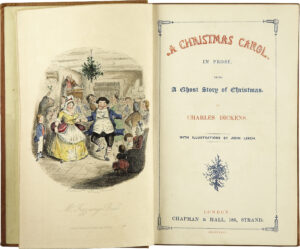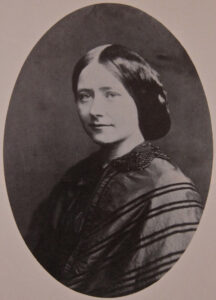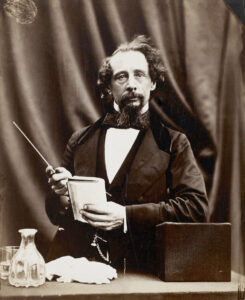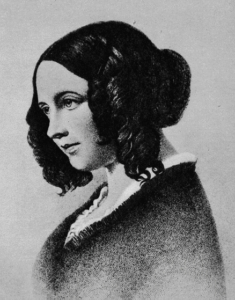The Life of Charles Dickens
By Eamonn Mullally
Early Years
Charles Dickens, one of the most acclaimed English writers of the 19th century, was born on February 7, 1812, in Portsmouth, England. He was the second of eight children in a family burdened with financial difficulties. His father, John Dickens, worked as a clerk in the Navy Pay Office but struggled to manage money, leading to the family’s frequent relocations and eventual descent into debt.
Hard Times
In 1824, the Dickens family’s financial plight reached a breaking point, and John Dickens was imprisoned in the Marshalsea debtor’s prison in Southwark. This event had a profound impact on the young Charles, who was forced to leave school and work at Warren’s Blacking Warehouse, a boot-blacking factory, near to Covent Garden in order to support his family. These grim experiences of child labour and poverty deeply influenced Dickens’ later writings, including A Christmas Carol, imbuing them with a keen sense of social justice and empathy for the downtrodden.
A Determination to Succeed
Despite these hardships, Dickens’ talent for storytelling and his determination to improve his circumstances never waned. He returned to school after his father’s release from prison but continued to work various jobs to support his family. In his late teens, he found employment as a law clerk and later as a shorthand reporter for the Morning Chronicle, a job that honed his observational skills and exposed him to the complexities of London’s legal and social systems.
The Rise to fame
Dickens’ literary career began in earnest in the 1830s when he started publishing a series of humorous sketches under the pseudonym “Boz.” These sketches, later compiled into the collection Sketches by Boz, garnered significant attention and set the stage for his rise to fame. In 1836, Dickens’ first novel, The Pickwick Papers, was published in serial form. The novel’s success was unprecedented, establishing Dickens as a literary sensation and a household name.
Throughout his career, Dickens continued to publish his novels in serialized form, a practice that made his works accessible to a wider audience and kept readers eagerly anticipating each instalment. His most notable works include Oliver Twist (1837-1839), David Copperfield (1849-1850), Bleak House (1852-1853), Great Expectations (1860-1861), and A Tale of Two Cities (1859). Each of these novels reflects Dickens’ deep concern for social issues, such as child labour, poverty, and the injustices of the legal system.
In addition to his novels, Dickens was an accomplished public speaker and performer. He embarked on several reading tours, both in England and America, where he would perform dramatic readings of his works to captivated audiences. These tours not only increased his popularity but also provided him with additional income
Marriage … and a secret affair
Despite his professional success, Dickens’ personal life was marked by turbulence. In 1836, he married Catherine Hogarth, with whom he had ten children
However, the marriage was not a happy one, and the couple separated in 1858. Dickens’ relationship with actress Ellen Ternan, which began during his marriage, remained a subject of speculation and controversy. He met Ellen in 1857 when she was just 18 years old, and the two formed a close and complicated bond. The affair caused significant strain on his marriage, leading to its eventual dissolution. Dickens took great pains to keep the relationship discreet, often going to great lengths to ensure that Ellen’s presence in his life remained private. Despite the secrecy, the affair greatly influenced his later works, with themes of youthful love and regret permeating his writing
The Final Chapter
Dickens continued to write and engage in social activism until his health began to decline in the late 1860s. On June 9, 1870, Charles Dickens passed away at his home, Gad’s Hill Place, in Kent, England. He was buried in the Poet’s Corner of Westminster Abbey, a testament to his lasting impact on English literature and society.




Charles Dickens’ legacy endures through his timeless works, which continue to be read and cherished worldwide. His ability to blend vivid characterizations, social critique, and compelling narratives has cemented his place as one of the greatest novelists of all time. Dickens’ life and career serve as an inspiration, reminding us of the power of perseverance, creativity, and the pursuit of justice.
You can find out more about by visiting the Charles Dickens Museum at 48-49 Doughty Street, WC1N 2LX.
Join Eamonn’s walking tour: A Christmas Carol – the locations that inspired Dickensto see the locations that endure to this day. See Walk of the Month for details.
